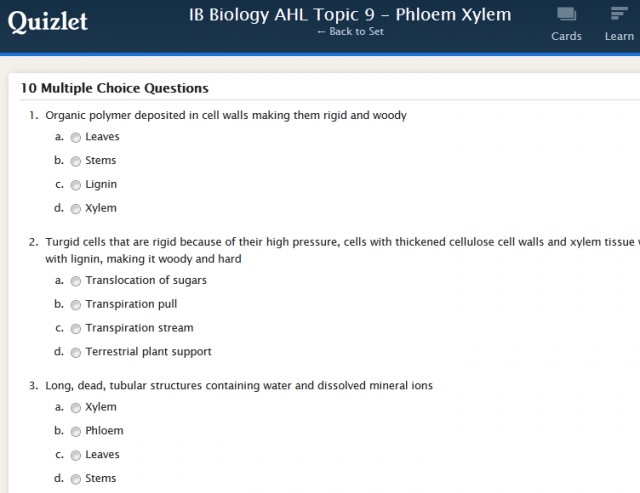Vascular tissues - introduction
 The structure of plants and their vascular tissue.
The structure of plants and their vascular tissue.
This lesson begins with a hands-on look inside the roots and stems of plants to see that the cells are not all the same and that there are specialised cells helping the plant to transport water and sugars. Not to mention supporting the plant. A short research task is designed to help students find the key details about xylem and phloem which will be needed in the following lessons. Finally, some simple questions tests factual recall.
Lesson Description
Guiding Questions
What is the inside of a plant like?
Are the roots the same as the stems?
Do plants have blood vessels like humans?
Activity 1 - Experiment to prepare slides of plant stems and roots
Complete the ![]() Experiment to prepare transverse sections of stems and roots to see examples of the xylem, phloem, parenchyma and other cells introduced in this topic. Clover, Sunflower, Cucumber, or bean plants all work well for this experiment. It is also worthwhile to look at prepared slides of transverse sections or longitudinal sections of stems and roots.
Experiment to prepare transverse sections of stems and roots to see examples of the xylem, phloem, parenchyma and other cells introduced in this topic. Clover, Sunflower, Cucumber, or bean plants all work well for this experiment. It is also worthwhile to look at prepared slides of transverse sections or longitudinal sections of stems and roots.
Activity 2: Video introduction to plant cells in the roots and stems.
Watch this video which introduces different plant cells, xylem, phloem, pith, epidermis and even sclerenchyma which makes the strands that get stuck in your teeth when you eat celery. Make brief notes as you watch.
Activity 3: Analysis of video of plant cells in the roots and stems.
Using the animation from Cambridge university, analyse the movement of water and sugar molecules in the xylem and phloem using the worksheet below.
Complete ![]() Xylem and Phloem analysis worksheet to make notes of key points from the animation.
Xylem and Phloem analysis worksheet to make notes of key points from the animation.
Activity 3 Plant Structure Quiz
In order to explain how the particular features of xylem and phloem help them to adapt to their function in the plant the following facts should be understood. These ![]() self-correcting quiz of structure and function points can be regenerated in a variety of configurations.
self-correcting quiz of structure and function points can be regenerated in a variety of configurations.
Teachers notes
Lesson Objectives
To introduce the structure and function of xylem vessels and phloem seive tubes elements
To be able to identify xylem and phloem in microscope images
This lesson aims to introduce students to the vascular parts of roots and stems ready for the detailed lessons which follow in the next two sections. It tries to put these parts into the context of the whole plant and to use student analysis of a model of xylem and phloem to teach key points rather than simple lecturing and note taking.
Research shows that students remember details better if they see them and use them in two separate lessons and also if they are asked to interpret information themselves.
It is no longer specifically required in the IB guide, but some students may like to further their understanding and memory of key points about xylem and phloem by comparing the two structures.
A comparison of xylem and phloem in a simple table can be found here on Diffen.

 IB Docs (2) Team
IB Docs (2) Team

